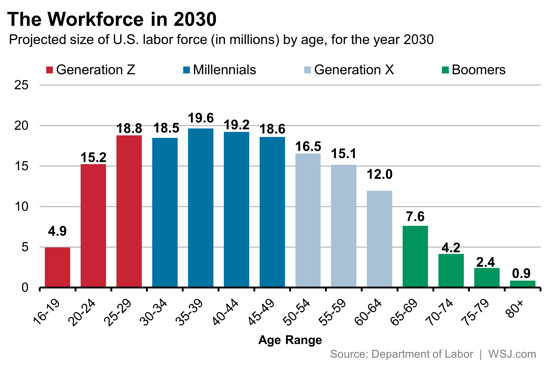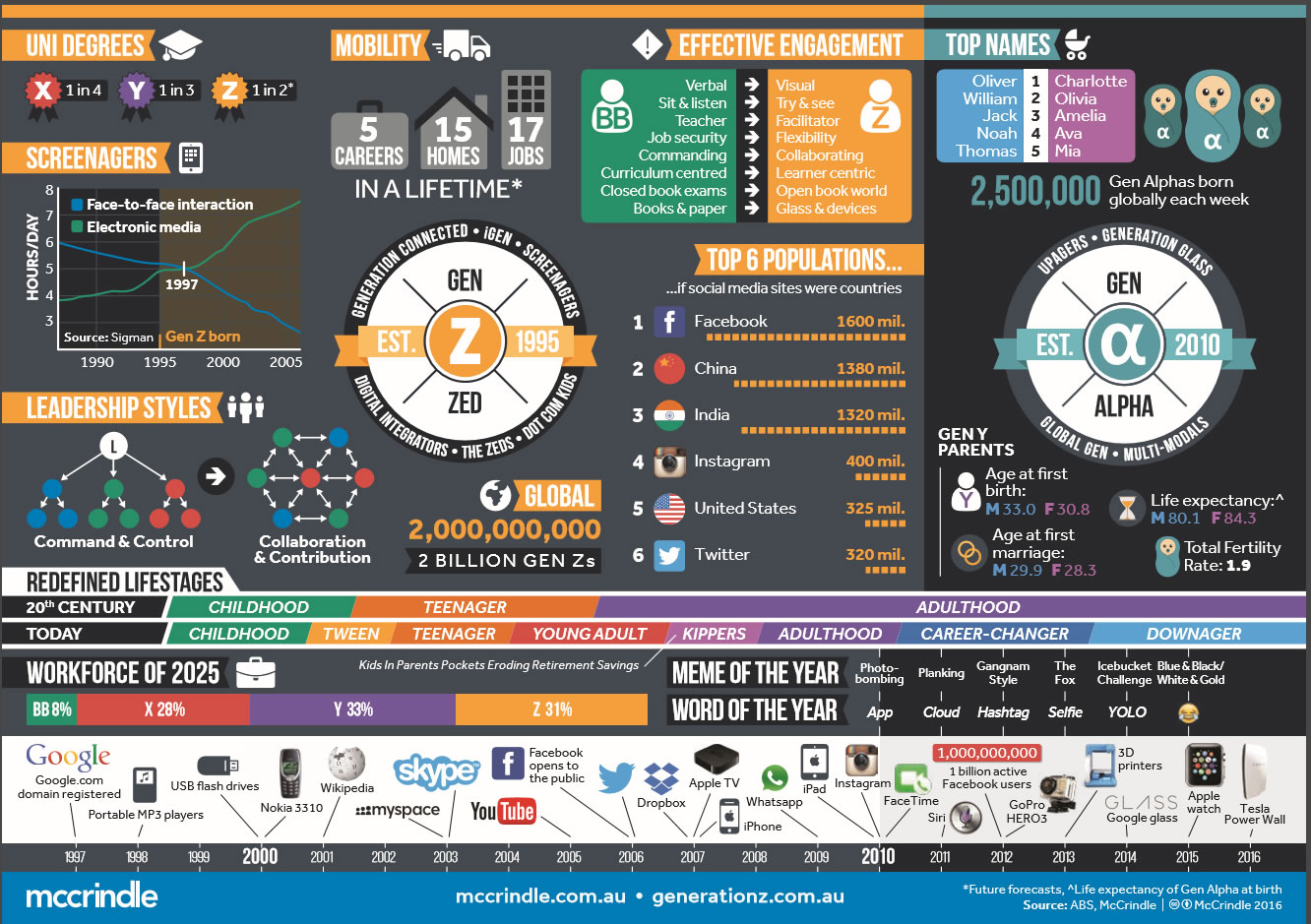The most common trend today is preparing the workforce differently than we have for retiring Baby Boomers and Generation X. Because the modern workforce is quite different than in prior decades with multiple generations present in the workplace, we must prepare the workforce differently and grow leaders in new ways. We must create “legacy leadership.” This post will provide some insights and hopefully some solutions to help you support and invest in your people resources for maximum impact and leave a transformational legacy of leadership that brings continuity and sustained growth by attracting and retaining high potential talent.
Millennials and Generation Z bring unique strengths, yet many are ill equipped to move into these roles from lack of experience and a deficit of essential social skills. Generation X and late Baby Boomers are secure in their leadership roles to sustain their organizations, yet many are challenged to keep up technically. The major shift is there are not enough Gen X folks to assume these leadership roles. Millennials are expected to move into roles earlier in their careers. And, many are working across cultures more than ever, requiring patience, awareness and other social skills supporting greater emotional intelligence.

Exposure to hand held devices has left us with a generation less prepared when they enter the workplace. As tweens and teens, devices provide access to dopamine, helping a generation of people avoid socializing and creating deep meaningful relationships. This access to dopamine allowed them to retreat rather than confront situations during these formative years, preparing them to function in society immediately with a foundation of “hard wired” social skills.
Traditional organizations are tasked today to pick up the slack emphasizing competency based approaches. Those wishing to remain competitive are learning they need to begin by shifting their hiring practices. This includes behavioral-based interviewing that hones in on essential skills, such as technical, social and other interpersonal, and the minimal entry level. The formal prepared interview deliberately focuses to determine the level of candidates competency based upon a candidate’s ability to respond and share past experiences. Organizations then will need to set these new employees up for success with developmental support to further enhance those skills essential to sustained success. This approach will help earn loyalty and retention.
Organizations are incenting growth with deliberate approaches that innately improve socialization. Core values of an organization should align with this mindset, and perspective employees made aware during the interview.
Here are a few examples of actions companies are taking to drive an affirming culture of constant transformation, many of which are often aligned with their core values:
- Cell phone free meeting rooms. This forces people to connect and engage in small talk prior to a meeting.
- Many are engaging in providing healthy snacks and meals onsite. This encourages shared conversation.
- Some have taken it further to require the luncheon room a device-free zone as well. No devices in sight.
- Talent development plan with sound adult learning principles designed to encourage participant interaction, accelerate learning and ensure creating new neural pathways improving application on the job.
- Emphasis on diversity. Engaging people with support to interact across cultures and generations that begins with self-awareness will help grow emotional intelligence. This supports an ever evolving client base, responsiveness to globalization and building team synergy.
Growing human capital resources (our people) has always been essential to retention. Retention is essential to legacy leadership. Another incentive to provide growth and development strategies will include keeping your people. Life stages have been redefined and a new life stage, Career-Changer, has been added before they reach the Downager stage which can help anticipate the needs of this workforce as each generation matures.

How you treat them will determine if they remain and if Career-changers return. Will your policies even allow them to return? Many companies have refined their policies to being open to rehire as a way to support this new reality.
The root intervention to support building leadership bench strength in the modern workplace is investing in development of talent differently than in past decades. If they (your people) see you are inventing in them, you are likely to retain them longer. Take them under your wing. Mentor them—coach them. Take time to understand them. Legacy leadership includes executives and other leaders realizing they need to lead differently than in many ways they were led.
In summary, there are unique gaps in soft skills and technical skills requiring a unique emphasis in development by organizations to set people up for success. Competency development will need to go deeper than education. Policies will also need to support creating new habits. These all require executive level commitment. Leaders need to be present to the legacy they want to leave and create a legacy leadership plan that aligns to support that.
Getting to know your people as individuals is critical. Show you authentically care. These are your future leaders, like any asset and your reward (ROI) is directly proportionate to your investment in them.
Conclusion
I would like to know… At this point, we have scratched the surface of this term called legacy leadership. How would you define it? I am curious to know. And, what is the legacy you hope to leave as a leader?
#LegacyLeadership, #LegacyLeadershipPlan, #CompetencyBasedLearning, #CompetencyModel, #CareerChangers, #Tween, #Downager, #CulturalTransformation, #Millennials, #GenerationZ, #HighPotentialTalent, #Retention, #EmployeeEngagement, #TransformationalLeadership, #BehavioralBasedInterviewing, #SocialSkills



